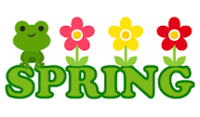Today is the first day of spring — specifically, it starts at 5:24 p.m. EDT. That is the exact time for the arrival of the Vernal Equinox (I have a brother-in-law that possibly/probably refers to it as the “First Point of Aries.”) Traditionally, we celebrate the first day of spring on March 21, but astronomers and calendar manufacturers now say that the spring season starts on March 20th, in all time zones in North America. So no matter what the weather may be doing outside, the vernal equinox marks the official start of the spring season.

Vernal translates to “new and “fresh,” and equinox is derived from the Latin aequus (equal) and nox (night.) So what does that mean? The daylight hours have been getting longer since December — the vernal equinox marks the turning point when daylight begins to win out over darkness. I’ve always heard that on the first day of spring and autumn, the day and night are equal to exactly 12 hours all over the world. But — that’s not true. On the days of the spring and fall equinox, the daylight is actually longer than darkness by several minutes.
As you probably know, there are a lot of myths and beliefs associated with the equinox….
Maybe the most famous myth is that you can stand a raw egg on end — supposedly due to the Sun’s position in the sky, and its gravitational pull on the Earth, you can stand an egg on end during the precise moment of the vernal equinox. But that’s something you can do any day — providing you have the patience. Equinoxes won’t make it any easier.
One of the more interesting beliefs is that you won’t have a noontime shadow on the day of the equinox. This is technically kind of true, but if you go outside at noon, you’ll see your shadow (assuming the sun is shining.) Since the Sun is always at an angle to you, you always cast a shadow. In order to not cast a shadow, the Sun must be directly overhead, and because the Sun is situated over the equator at the equinox, you’d have to be standing at the equator precisely at noon on the day of the equinox to not have a shadow.
Some people believe the equinox is a day-long event. Again, not true — it doesn’t take all day, it’s only a moment in time. The true equinox is the exact moment in which the Sun passes over the equator. Don’t blink, or you’ll miss it.
Some people believe that, just like a full Moon, the spring equinox can alter your mood. Again, not really true — the Sun moving across the equator has no real effect on emotions — but — seasonal changes can, and do, often play a big part in moods. Around this time of year, you may experience a little bit of “spring fever.”
So welcome to spring — I don’t often get a chance to quote my friend Sitting Bull, but here’s something he said at an Indian council in 1875, that seems appropriate for today…. “Behold, my friends, the spring is come; the Earth has gladly received the embraces of the Sun, and we shall soon see the results of their love.”
— 30 —
